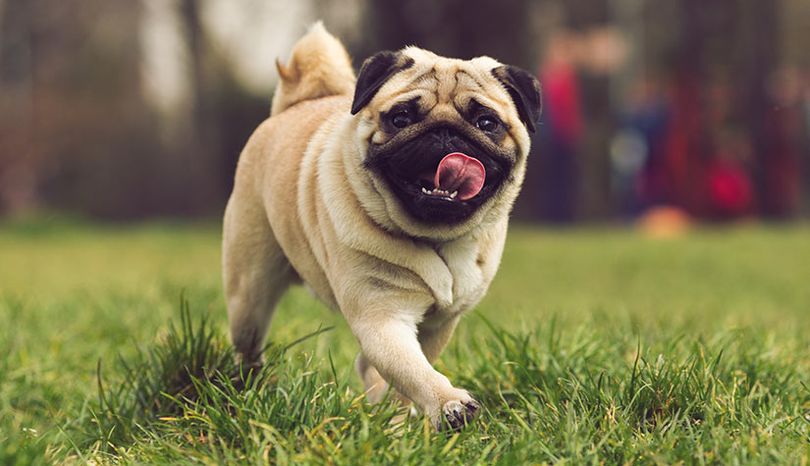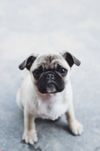Dog Breed
Pug

- Full Name
- Pug
- Your PupScore
- Take the best dog breed quiz to get your Pup Scores!
- Life Span
- 12 - 14 years
- Weight
- 14 - 18 pounds
- Description
Everyone knows about Pugs. It's hard not to love them. Pugs were originally bred to be lapdogs and true lapdogs they are. Being bred for companionship, they are used to being surrounded by people and other dogs and they don't appreciate being left alone, which is something that everyone should put into consideration.
Even though they were bred as lapdogs, Pugs are one of the oldest canine breeds in the world as it is thought that they originated from China around 700 BC. They were so precious to The Emperors of China that they had their own servants and special rooms in royal palaces! So it is no wonder why they can sometimes be stubborn and lazy. On the other hand, in true small dog fashion, they can be overly confident as well. They are goofy, friendly with children, and a great dog for first time owners. Although they are not a good fit for anyone who is looking for an exercise partner, as they can oftentimes have trouble breathing, and they do not have the best stamina.- Origin
- China
- Bred For
- Lapdog
- Family Considerations
- Overall Ease of Breed
- Personality
- Home and Environment Considerations
- Physical Characteristics
Is the Pug good with children?
Is the Pug friendly with strangers?
Is the Pug friendly with other dogs?
Does the Pug like to cuddle?
Does the Pug like to play?
Does the Pug make a good service dog?
Is the Pug good for first-time owners?
How well can the Pug be trained?
Does the Pug shed a lot?
Is the Pug easy to groom?
Does the Pug need a lot of exercise?
How smart is the Pug?
How much does the Pug bark? Does the Pug bark too much?
Is the Pug a good guard dog?
Is the Pug good at staying alone? Is the Pug independent?
Is the Pug a good apartment dog?
How big is the Pug?
How much does the Pug tolerate hot weather? When is it too hot for a Pug?
How much does the Pug tolerate cold weather? When is it too cold for a Pug?
Does the Pug try to run away?
Is the Pug a healthy dog? The health of a Pug should be measured not just by how many years they live, but also by how many health issues they've had. It is important to know which health conditions your breed is prone to- hip problems, eye problems, bloating, and arthritis are all common dog health problems.
How energetic is the Pug?
How much does the Pug drool?
Does the Pug have a large prey drive? Does the Pug like to chase birds, cats, and other small animals?
Is the Pug atheltic?
Breed Variations
Black
Fawn
Gray
Brindle
 Dog
Dog- Toy
- Small Molossian
- Pug
Pugs for adoption
Similar Breeds




